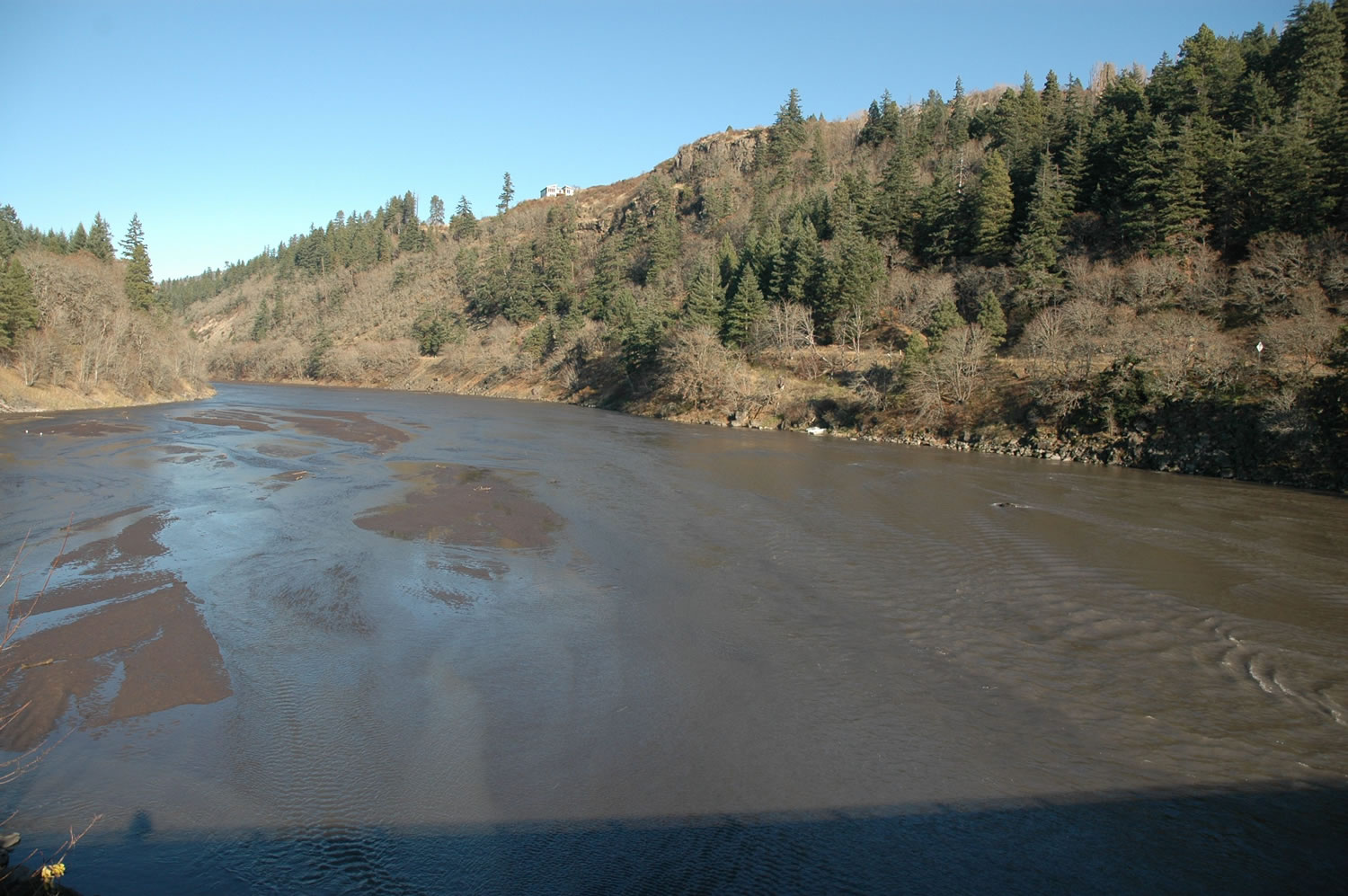UNDERWOOD — Once a steelheader’s paradise, now a century’s worth of silt.
That’s the way anglers look at the White Salmon River, bemoaning its present condition. Fish biologists and hydrologists look at it and see a bright future.
Avid fisherman Ken Taylor can’t count the number of times he’s made the two-hour drive from his Selah home to the mouth of the White Salmon — the big White Salmon in angler parlance, to delineate it from the Little White Salmon five miles to the west — in pursuit of steelhead or chinook.
Two months after Condit Dam was breached, though, looking at the sediment that has filled in the river channel, Taylor thinks those days are over.
“It was beautiful, probably one of the most beautiful spots in the world to fish up in that gorge, big boulders and pools,” Taylor says, adding that the dam’s Oct. 26 breaching “pretty much killed that.”
The first 300 yards upstream from the Highway 14 bridge, once 18 to 20 feet deep and a popular trolling spot for boating anglers, now just has a few inches of water running over a deep bed of sediment. Most of the estimated 2.4 million cubic yards of silt that accrued over 98 years in the man-made, 92-acre Northwestern Lake above Condit has now moved into or through the 3.3 miles of lower river.
“They took (the dam) out for fish passage, but fish can’t swim in two or three inches of water,” Taylor says. “It’s just a solid mud flat with three or four inches of water right now. They’re going to have to dredge that out.”
Anglers have long flocked to the White Salmon for winter steelhead, for hatchery steelies released below the dam, for its fall chinook fisheries on tules and upriver brights, and for the ultra-popular summer-run salmon escaping the Bonneville pool’s warm waters by “dipping in” to the White Salmon’s cool, glacier-fed waters.
Those days are gone.
Doug Pidduck of Yakima, a former state president of Northwest Steelheaders and the current Yakima chapter president of the Coastal Conservation Association, said he thinks it will be “probably 20 years” before the river will be reopened for any kind of fishing season.
Federal and state fisheries biologists, though, have a completely different view of the results of the breaching, which was done to open up 33 miles of additional salmonid spawning and rearing habitat.
Although there’s been only one heavy rain event since the breaching, they say, far more of the sediment build-up had already flowed downriver — including a lot of large boulders and rocky “cobble” — than hydrologists had expected by this time.
“One thing right now folks have to realize, we still haven’t gotten any sort of rain to speak of (since the late-November gully-washer),” says U.S. Fish and Wildlife Service biologist Rod Engle.
“Rivers are meant to move rock. That’s one of their huge purposes: They move rock,” he said. “What we’re seeing, at the tip of the reservoir the river has cut down and is back to finding its historical streambed elevation. We expected that to happen fairly quickly — I think some of us thought it would occur in about a year — and it’s probably near or at that level now … and it’s been, what, seven or eight weeks.
“So to me it looks like this is actually progressing very quickly, even though we haven’t had many flows. Once La Nina starts to show its force, we’re going to see a lot more sediment move out.”
The river just needs “some ‘pineapple express’ type events, rain-on-snow events to keep this stuff moving,” says fish biologist John Weinheimer of the Washington Department of Fish and Wildlife.
Weinheimer says the “refugia” — the cooler, glacial-melt tributary waters sought by sweltering summer steelhead in the Bonneville pool, and where anglers have traditionally had fishing success — will still exist. And anglers will find it.
It will just be in a different place.
The sediment bar pushing out from the mouth of the White Salmon into the Columbia could well become the new congregating point for those “dipping-in” salmon and steelhead.
“We don’t know how big that bar’s going to be yet, and exactly how the mouth of that river is going to end up,” Weinheimer says. “You’re still going to have that cold water coming down, but how it enters the Columbia and how it settles out is something we won’t know until next year, or the next couple of years, as this thing forms itself. We’re still going to have salmon and steelhead that want that cold water. How they’re going to enter and hold in that river is the big unknown.”
But the fish will eventually figure it out and so, too, will the fishermen who want to catch them, Weinheimer says.
“As a fishermen, we — because I’m a fisherman, too — we’re going to have to relearn to fish that river,” he says. “Guys had figured it out and were real successful at what they were doing. Give this some time and I know those same fishermen will figure it out.”
Considering the state of the sediment-filled mouth of the White Salmon River right now, though, makes it hard for anglers like Ken Taylor to imagine it ever returning to the angler’s Eden it once was before the removal of the Condit Dam.
“That just destroyed one of our best fisheries for steelhead,” Taylor says. “Everybody knew that was going to happen. That just makes me sick to my stomach.
“Just another good place gone.”



